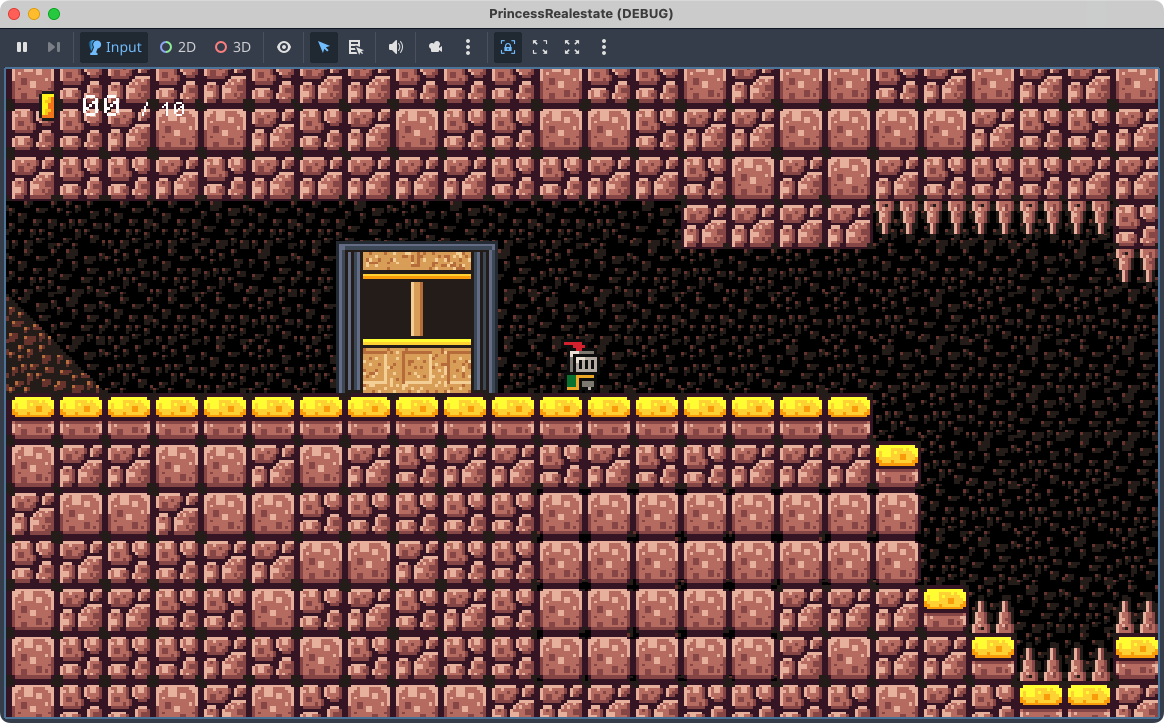-
📘 Devlog
Godot Game - Working On Backdrops
Trying my hand in making some mountainous backdrops for world 3. Continue reading →
-
I’ve never noticed how many barbers there are around here (South Melbourne). This block alone there are three, and I know of two more nearby.
-
You truly don’t know what you had until it’s gone. Case in point: the touch-bar on my work MacBook was not working at all last week, and It was during that time I realised how often I actually used it to lock the screen. It’s back today, meaning I no longer need to lock it via the Apple menu.
-
I was thinking about the gatekeepers of video content online when I was speaking with someone at a party yesterday. Several years ago, he made a documentary which he was trying to sell via DVDs on his site, where he was making nothing at all. It did eventually get picked up by Amazon Prime, but it didn’t really go anywhere until they decided to promote it a little. It took off after that, but even then, the returns he was seeing were quite small. He didn’t give an exact figure — I think it was more than what he was making from DVDs — but it didn’t seem enough to cover the cost of production or make a living out of it. He’s hardly a house-hold name, so it wouldn’t have commanded a large payout anyway, but he was lamenting that it was easier making more a decade ago. The story ended with him asking me how one can make a sustainable living this way.
I wish I had an answer for him. People go to where the content is, and for this sort of video material, that’s the streamers of the world: Netflix, Amazon Prime, Apple TV, etc. And you’re completely at the mercy of the algorithm with those platforms, along with what they choose to promote. I suppose he could’ve tried creating buzz by releasing clips on YouTube, and maybe trying to convince people to go to his website and purchase a DVD (although to be fair, he may have already tried that).
I wanted to say “just put it on your website.” But I couldn’t see that helping him. I mean, the DVD’s weren’t selling, although I can’t imagine DVD’s being enticing to anyone that’s not a avid fan of physical media. And I’ve not watched his documentary, but knowing him and the type of shows he produces, I can’t see it being enough for people to setup a subscriptions to watch it. It wouldn’t work with this material, and subscriptions really only work if what you’re producing is timely: weekly, fortnightly, etc. (well, I guess there are exceptions: I’m a Patreon subscriber to CGP Grey and the last video he release was about a year and a half ago).
Anyway, I don’t really have a point here other to say that it’s rough out there. Hope things improve for him.
-
I cannot support the idea of Apple trying for exclusive F1 rights worldwide. Not that I care about watching the race, but the F1 is so effin’ disruptive here the least they can do is keep it on public broadcast television.
-
It'd be amusing to ponder, given how podcasts all have a video component now, that if Apple did name their new box "Home Pod," in 5 years time, would people think the "pod" in "podcasts" refers to that? Everyone's referring to their shows as "pods" now I do wonder if they're forgetting where "pod" originated from.
-
Eastern rosella sighting. Not that they’re uncommon, but they are a little camera shy.

-
I wish this tool didn’t need to exist. I wish Hugo was a bit more rigorous on maintaining backwards compatibility between version. But in this world a tool like this is absolutely necessary. I look forward to trying it out to on some old sites.
Via: Mandaris Moore
-
Ten Pointless Facts About Me
Jumping on another blogging trend. Continue reading →
-
🔗 The Guardian: Tawny frogmouth named 2025 Australian bird of the year winner
Runners up include the gang-gang, which would’ve been my vote between the two. But still a worthy winner. Congrats, Tawnies. 🏆
-
🛠️ DB Fiddle
Web-based sandbox for playing around with databases and SQL. Includes the like of PostgreSQL, making it really useful to try out queries.
-
State of the Feed Reader
Auditing my RSS feed subscriptions and how frequently they’re being updated. Continue reading →
-
Spotted in the wild: an XFCE-based Linux distribution.

-
🔗 Alex Edwards: A modern approach to preventing CSRF in Go
Have we finally reached the point where CSRF attacks can be prevented without relying on a token-based check (like double-submit cookies)? Can we build secure web applications without bringing in third-party packages like justinas/nosurf or gorilla/csrf?
And I think the answer now may be a cautious “yes” — so long as a few important conditions are met.
This looks interesting, and I like how this middleware is included in the standard library. Filing this to look at later.
Via: Simon Willison
-
Working on some Go code. Implemented a function, which returns a function, which returns a type that itself has a function which itself returns a function. Four levels of function nesting. Might be a record in my Go career (excluding unit tests).
-
At RSS feed reader zero, apart from two articles I’m “saving” for this evening.
-
Argh! Why hasn’t Go got a standard UUID type by now? If any type should be included in the standard library, it’s this one.
-
Finally added some checkpoints to level 1-3. Also added some animated water as a new type of hazard. The asset pack I’m using came with a single “wave” tile. I used Aseprite to shift that across 4 cells and configured it as an animation in the tile set. I was planning to add some background waves too, but that made it a little too busy and hard to discern. Less is more here.
-
I feel good things can come from Apple’s recent rebranding of Apple TV+. One example: the sentence “watching Apple TV on Apple TV on my Apple TV” can now be uttered without the listener thinking we’re engaging in word play. 😀
-
I’ve been using ChatGPT Pulse for a couple of weeks now; often enough to be asked to fill in a user survey, which I took the opportunity to answer. Here’s my response to what can be done to make Pulse better:
Please make Pulse available via RSS/Atom. I find the information that Pulse produces to be useful, but I tend to not see it most days as I do most of my online reading via an RSS reader. Being able to read this in an RSS reader would be extremely useful to me.
Yes, ’tis true. Pulse is quite good, but can be so much better if I’m able to read it alongside my other feeds.
-
A small devlog entry today. Just painting the level, adding background tiles and kill-zones. I also added a frame around the lift door, just to define it a little. Discovered that it’s probably best not to have sprites with non-even dimensions. It makes positioning them a little awkward, resulting in fractional offsets. I elected to include a transparent row at the top of the frame sprite, just to avoid this.

-
Some follow-up to my post about deleting URL suggestions from Vivaldi’s URL bar: I did a quick search, and it looks to be possible:
- Bring up the bad suggestion in the URL bar.
- Press Shift+Delete.
Tried it on my dodgy URL and it seems to work. Suggestion doesn’t need to be in History either.
-
I wish there was a way to get Vivaldi to “forget” a URL I entered in the past, or recognise that a URL that never actually resolved is not worth remembering. I mistyped a URL once, and now it shows up as the first choice when I want to visit a site.
-
Went to a local art exhibition over the weekend. There was a striking watercolour of a peacock that I was interested in. I said to myself “I’ll come back Sunday afternoon to buy it” but I completely forgot. Although, casting my mind back, it may have already been sold.
-
📘 Devlog
Godot Game - A Trigger That Reveals Secrets
A new mechanic has been developed to reveal hidden areas in a game when players approach, using an
Area2Dnode that fades tile layers in and out for a smoother experience. Continue reading →
